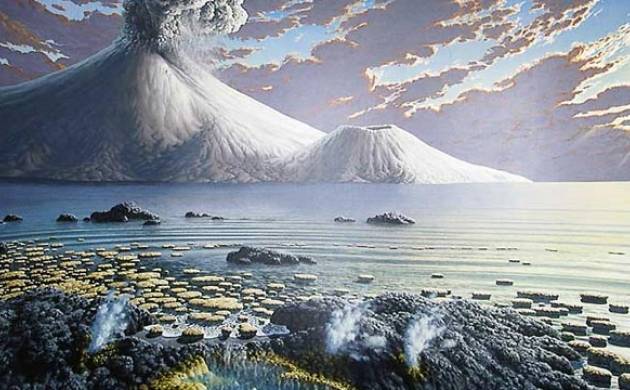-
Tips for becoming a good boxer - November 6, 2020
-
7 expert tips for making your hens night a memorable one - November 6, 2020
-
5 reasons to host your Christmas party on a cruise boat - November 6, 2020
-
What to do when you’re charged with a crime - November 6, 2020
-
Should you get one or multiple dogs? Here’s all you need to know - November 3, 2020
-
A Guide: How to Build Your Very Own Magic Mirror - February 14, 2019
-
Our Top Inspirational Baseball Stars - November 24, 2018
-
Five Tech Tools That Will Help You Turn Your Blog into a Business - November 24, 2018
-
How to Indulge on Vacation without Expanding Your Waist - November 9, 2018
-
5 Strategies for Businesses to Appeal to Today’s Increasingly Mobile-Crazed Customers - November 9, 2018
Early Earth’s air weighed half what it does today
Traditionally it was believed that young Earth had a thicker atmosphere, but scientists have found that air at that time exerted at most half the pressure of today’s atmosphere.
Advertisement
The research from the University of Washington reverses the commonly accepted idea that the early Earth had a thicker atmosphere to compensate for weaker sunlight. This discovery has revealed that during that time, earth’s atmosphere was far thinner and weighed less than half of what it is today.
The worldwide team of researchers have reached their remarkable conclusion after carefully examining bubbles trapped in 2.7 billion year old rocks in Western Australia. Sunlight was about a fifth weaker than it is today, and the atmosphere was just in the process of building up significant amounts of oxygen.
Astrobiologist Professor David Catling, one of the study’s authors from the University of Washington, said the Sun was roughly 20 percent less luminous 2.7 billion years ago, so if Earth had an atmosphere similar to today it would have been covered in ice. Layers of the rock showed evidence of single-celled photosynthetic life.
If the atmosphere was as thin as the bubbles in the rocks indicate, there were probably higher proportions of heat-trapping greenhouse gases such as methane and carbon dioxide. “It’s going to take us a while to digest all the possible consequences”, said co-author Roger Buick.
The researchers aren’t suggesting that the Earth’s atmosphere evolved linearly.
Until now, the prevailing hypothesis to explain these warmer-than-expected conditions was that the atmosphere at that time had been much thicker, which would have insulated the Earth.
For the objective of the study, researchers needed a site that had lava that was undisputedly formed at sea level. But, that turns out to be wrong. “They also investigated the presence of gases and how the interplay of climate and biology affected the young Earth”, according to a recent Tech Times report.
A lava flow from Australia’s Beasley River, whose air bubbles were examined to study ancient air pressure.
Scientists have put forward a totally new theory about how Earth stayed so warm billions of years ago. By measuring the size of air bubbles trapped in the top of the rock (which were constrained by air pressure) and comparing them to the smaller bubbles lower down (which were under pressure from the air and the rock), they were able to gauge what the atmosphere would have been like.
The research was published online May 9 in the journal Nature Geoscience.
James Kasting, a geoscientist at Pennsylvania State University who wasn’t included in the study, said that with the absence of a thick atmosphere from the picture, the theoretical paradox will apparently be resolved best by exclusively greenhouse gases.
Earth spun more quicklyso days were shorter, and the only life forms were single-cellmicrobes, said study leader Sanjoy Som, CEO of Seattle-basedBlue Marble Space. “Our result is the opposite of what we were expecting.” said lead author Sanjoy Som.
This finding also has repercussions on what sort of gases were present in those bygone times. “People will need to rewrite the textbooks”.
Advertisement
All this demonstrates that “a planetary environment completely different than modern Earth can sustain life on its surface”, Som, who worked on the study while at the University of Washington and is now based at NASA’s Ames Research Center in California, told Reuters.




























